
by Glenn R. Swift
Gently nestled between the Allegheny Plateau and the Ridge-and-Valley Appalachians of northeastern Pennsylvania lies a national treasure of unimaginable splendor—Ricketts Glen. Once the proud home of Native Americans in ages past, this 13,000-acre state park is known for its magnificent, old-growth forest, spectacular flora and fauna, mesmerizingly winding and canopied hiking trails, and 24 cascading and breathtakingly beautiful waterfalls.
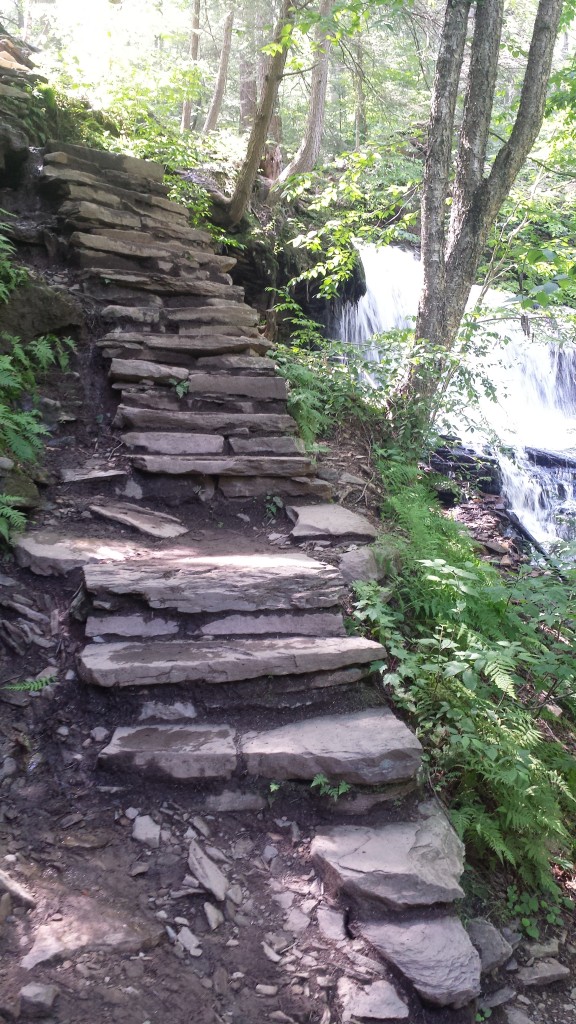
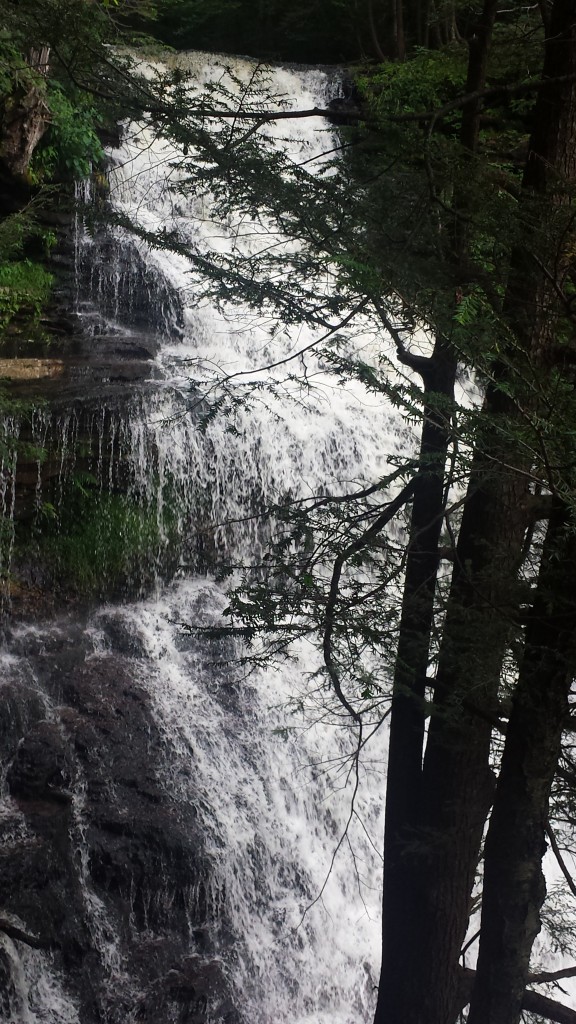
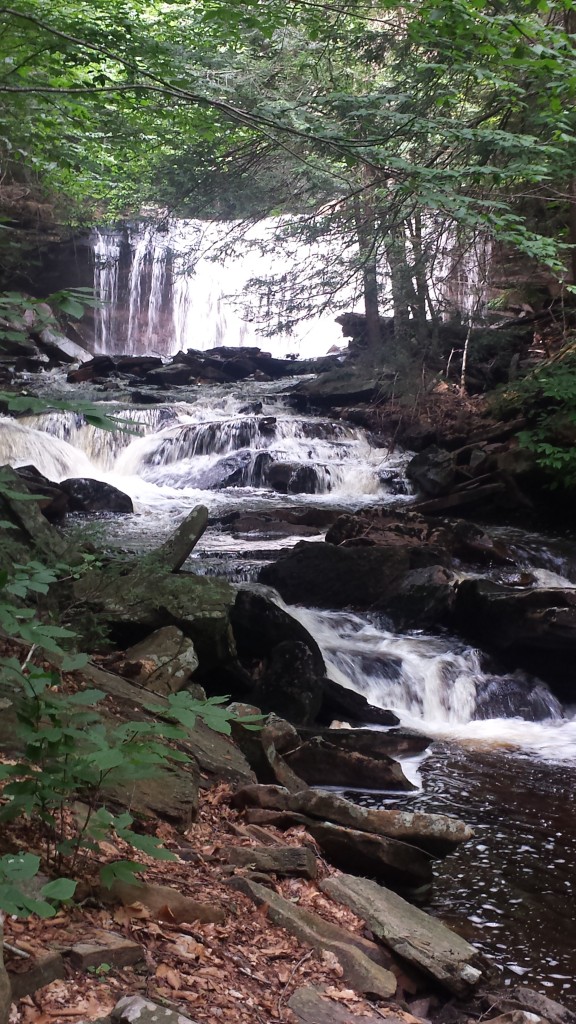
Managed by the Pennsylvania Department of Conservation and Natural Resources (DCNR), Ricketts Glen State Park is named for R. Bruce Ricketts, a colonel in the American Civil War who owned over 80,000 acres in the area in the late 19th and early 20th centuries. Thanks to the colonel’s efforts, the old-growth forests in the glens were spared from clearcutting. Today, the park offers hiking, ten cabins, camping (one of the two camping areas is on a peninsula in the lake), horseback riding and hunting. Lake Jean is used for swimming, fishing, canoeing and kayaking. In winter, there is cross-country skiing, ice fishing on the lake and ice climbing on the frozen falls. The Glens Natural Area has eight named waterfalls in Glen Leigh and ten in Ganoga Glen, which come together at Waters Meet; downstream in Ricketts Glen, there are four to six named waterfalls.
Ricketts Glen has four rock formations from the Devonian Carboniferous periods (420 to 300 million years ago) and is home to a wide variety of plants and animals. The park was named an Important Bird Area by the Pennsylvania Audubon Society and is an Important Mammal Area, too. Ricketts Glen State Park was chosen by the Pennsylvania Department of Conservation and Natural Resources (DCNR) and its Bureau of State Parks as one of the Keystone State’s “Must-See” destinations for nature lovers.

Undoubtedly, the most amazing feature of Ricketts Glen is its 24 named waterfalls, which flow in three steep, narrow valleys, or glens, along the clear, cooling waters of Kitchen Creek. The falls range in height from 9 feet to the 94-foot Ganoga Falls. Nearly all of the falls are visible from the Falls Trail, which Ricketts had built from 1889 to 1893 and which the state park rebuilt in the 1940s and late 1990s. In fact, the Falls Trail has been called “the most magnificent hike in the state” and one of “the top hikes in the East.”
The waterfalls are on the section of Kitchen Creek that flows down the Allegheny Front, a steep escarpment between the Allegheny Plateau to the north and the Ridge-and-Valley Appalachians to the south. The glens are made of sedimentary rocks from the Huntley Mountain and Catskill Formations that formed up to 370 million years ago in the Devonian and Carboniferous periods. The waterfalls are the result of increased flow in Kitchen Creek from glaciers enlarging its drainage basin during the last Ice Age.
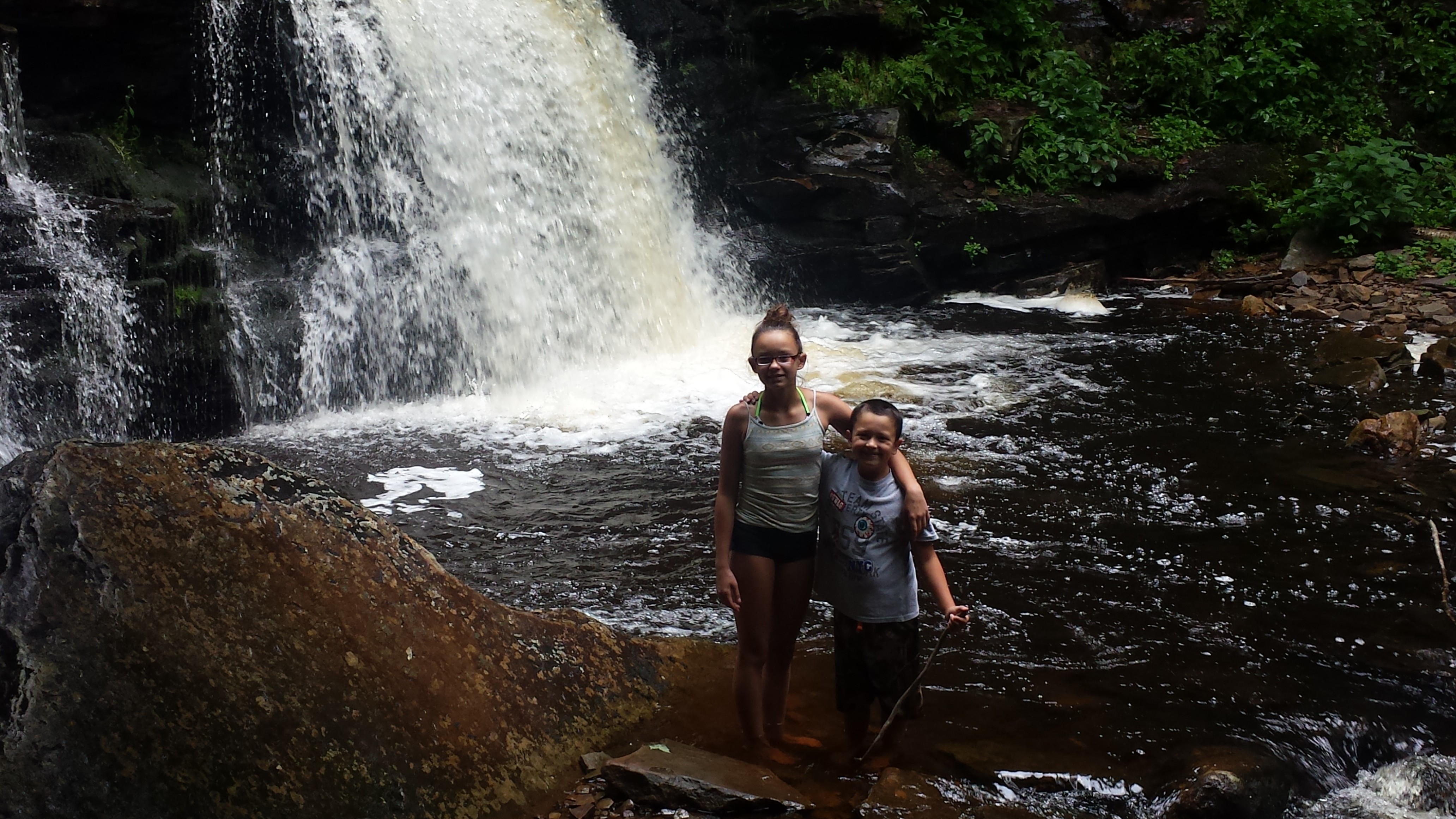
Ricketts named 21 of the waterfalls, mostly for Native American tribes and places, and his family and friends. There are ten named falls in Ganoga Glen, eight named falls in Glen Leigh and six named waterfalls in Ricketts Glen. The tallest and most magnificent are in Ganoga Glen, described below in the order in which a hiker would encounter them while traveling south along the Falls Trail.
Mohawk Falls is 1.1 miles upstream of Waters Meet and just 0.3 miles south of the Lake Rose trailhead parking lot by Lake Jean. The falls are 9 feet in height with steeply descending, boulder-choked tailwaters. The Mohawk were an Iroquoian-speaking people and the easternmost of the original five tribes of the Iroquois Nation. As such, they were known as the “Keepers of the Eastern Door” of the Iroquois Longhouse and one of three “Elder Brothers” in the Confederacy. The Mohawk also had a veto in the Iroquois council.
Oneida Falls is 0.9 miles upstream of Waters Meet. The Oneida are an Iroquoian-speaking people and one of the five original members of the Iroquois; their lands were between the central Onondaga and the easternmost Mohawk. They were “Younger Brothers” in the Iroquois Confederation and were “affiliated with the Mohawks.” During the American Revolutionary War, the Oneida and their allies, the Tuscarora, were the only Iroquois who supported the United States during the American Revolution.
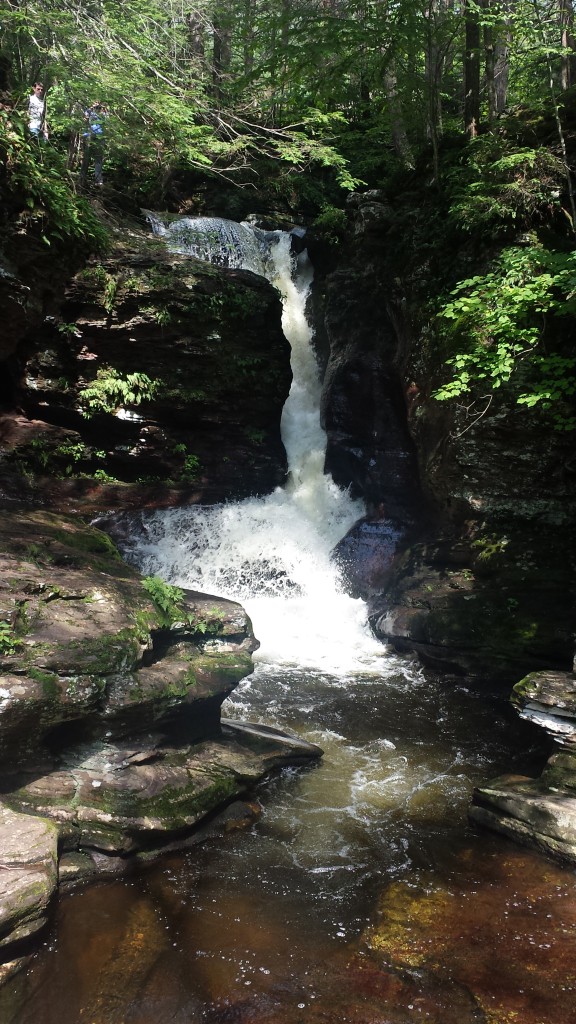
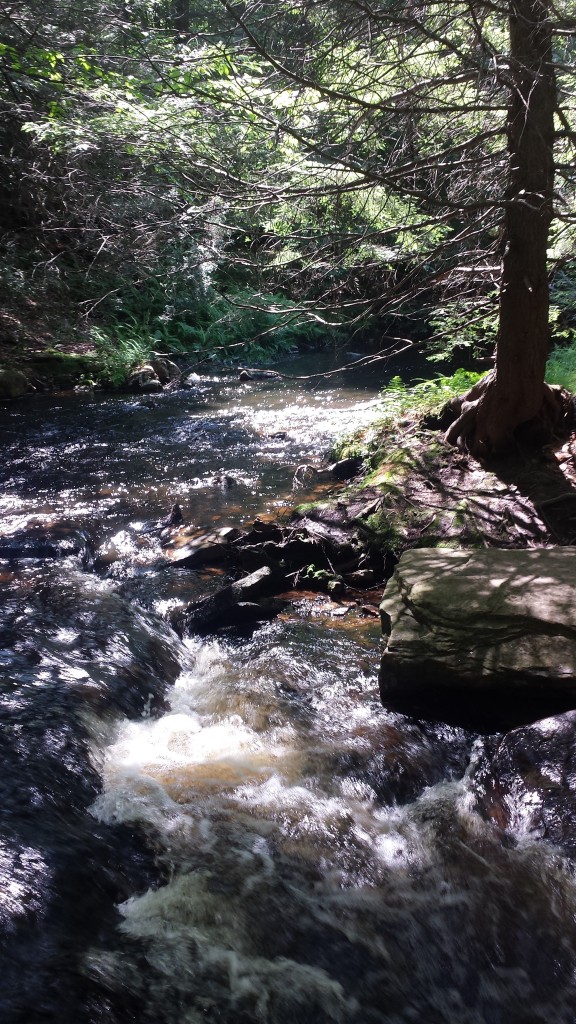
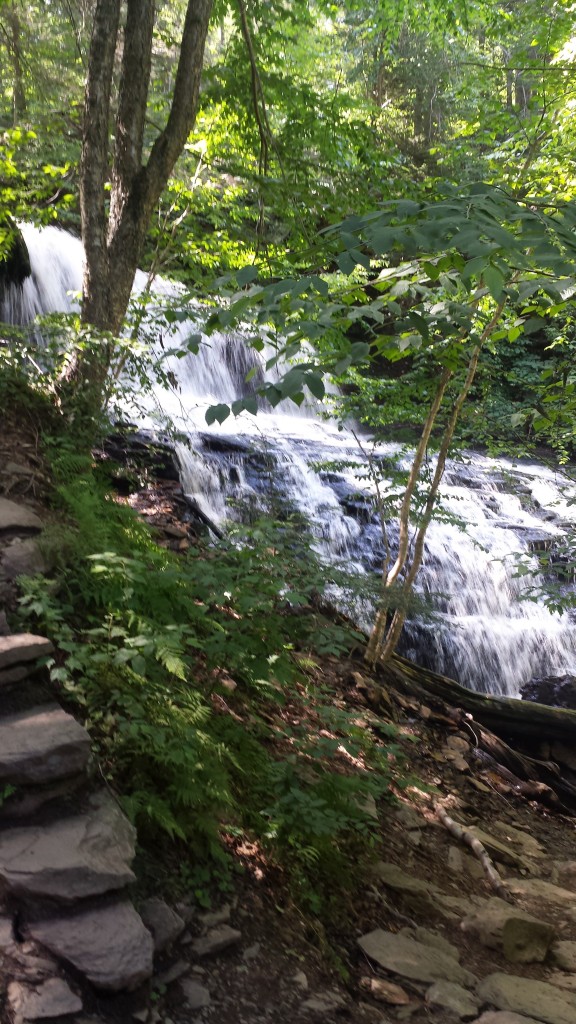
Cayuga Falls is 0.8 miles upstream of Waters Meet. The Cayuga are an Iroquoian-speaking people and one of the five original members of the Iroquois; their lands were between the central Onondaga and the westernmost Seneca. They were “Younger Brothers” in the Iroquois Confederation and were “affiliated with the Senecas.”
Ganoga Falls is 0.7 miles upstream of Waters Meet and unquestionable the park’s “Crown Jewel.” Majestically, the creek changes direction near the top of the falls, which causes the size and shape of the falls to change with your perspective as you walk alongside.

Of course, there are nineteen other spectacular falls throughout the park, one of which, the Adams Falls, is particularly magnificent. At 36 feet in height, the Adams Falls are named after Adam Kale, a watchman on Kitchen Creek employed by the North Mountain Fishing Club around the turn of the last century. It is not only one of the most beautiful waterfalls in the park, but the most accessible; it is a short distance from the parking lot on the 1-mile Evergreen Trail. Adams Falls has carved a narrow chute in the rock, and its lower plunge pool, Leavenworth Pool, has a diameter of 30 feet and a depth of 8 to 10 feet. (The pool is great for taking a refreshing dip if you’re not a native Floridian.) The pool is named for Frank Leavenworth from nearby Wilkes-Barre who operated coal mines and served as president of the fishing club.
Directions: The main entrance to the park is located in Pennsylvania’s Columbia County in the borough of Benton just four miles from the intersection of state roads 118 and 487.
So, if you’re looking for somewhere near the eastern seaboard where you can still immerse yourself in spectacular, natural beauty with a host of outdoor activities (and aren’t afraid to go without your cell phone and iPad for a few days), Ricketts Glen might just be the place.
For more information on Ricketts Glen State Park, please visit www.dcnr.state.pa.us/stateparks/findapark/rickettsglen.
